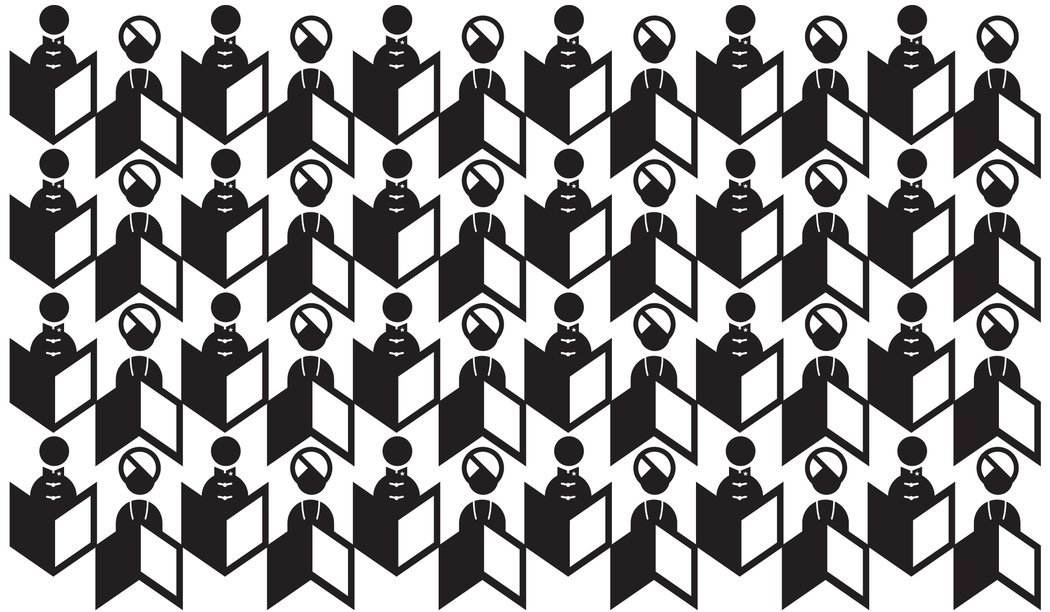|
CAMBRIDGE, Mass. — MODERN India is, in many ways, a success. Its claim to be the world’s largest democracy is not hollow. Its media is vibrant and free; Indians buy more newspapers every day than any other nation. Since independence in 1947, life expectancy at birth has more than doubled, to 66 years from 32, and per-capita income (adjusted for inflation) has grown fivefold. In recent decades, reforms pushed up the country’s once sluggish growth rate to around 8 percent per year, before it fell back a couple of percentage points over the last two years. For years, India’s economic growth rate ranked second among the world’s large economies, after China, which it has consistently trailed by at least one percentage point.
马萨诸塞州坎布里奇——现代印度在很多方面都是成功的,它作为世界最大民主国家的称号并非徒有虚名,它的媒体活跃而自由,印度人每天购买的报纸比其他任何国家都要多。自从1947年独立以来,新生儿预期寿命从32岁上升到了66岁,提高了一倍多,经通胀因素调整的人均收入也增长了五倍。最近几十年,改革将印度一度迟缓的经济增长率提高到了每年8%左右,然后在过去两年又回落了几个百分点。多年来,印度的经济增长率在全球大型经济体中一直仅次于中国,位居第二。印度经济的增速一直比中国低至少一个百分点。
The hope that India might overtake China one day in economic growth now seems a distant one. But that comparison is not what should worry Indians most. The far greater gap between India and China is in the provision of essential public services — a failing that depresses living standards and is a persistent drag on growth.
印度的经济增速有朝一日超越中国的愿望,现在显得遥不可及。但上述比较并不是印度人最应该担心的。印度与中国之间更大的差距在于关键性公共服务的供应,这些服务的缺失不仅降低了生活水平,而且长期以来一直在抑制增长。
China has done far more than India to raise life expectancy, expand general education and secure health care for its people. India has elite schools of varying degrees of excellence for the privileged, but among all Indians 7 or older, nearly one in every five males and one in every three females are illiterate. And most schools are of low quality; less than half the children can divide 20 by 5, even after four years of schooling.
中国在提高人民预期寿命、普及教育、提供医疗服务方面,做的比印度要多得多。印度有面向各个层次的出色的精英学校,但年龄在7岁及以上的印度人当中,有近五分之一的男性和三分之一的女性不识字。而且大多数学校都水平低下,即便在接受了四年学校教育后,只有不到一半的儿童会计算20除以5。

India may be the world’s largest producer of generic medicine, but its health care system is an unregulated mess. The poor have to rely on low-quality — and sometimes exploitative — private medical care, because there isn’t enough decent public care. While China devotes 2.7 percent of its gross domestic product to government spending on health care, India allots 1.2 percent.
印度或许是世界最大的通用名药生产国,但是其医疗系统缺乏管理,乱作一团。穷人必须依赖低质量,有时甚至是剥削性的私人医疗服务,因为良好的公共医疗不足。中国将国内生产总值(GDP)的2.7%投入到政府的医疗支出当中,而印度只有1.2%。
India’s underperformance can be traced to a failure to learn from the examples of so-called Asian economic development, in which rapid expansion of human capability is both a goal in itself and an integral element in achieving rapid growth. Japan pioneered that approach, starting after the Meiji Restoration in 1868, when it resolved to achieve a fully literate society within a few decades. As Kido Takayoshi, a leader of that reform, explained: “Our people are no different from the Americans or Europeans of today; it is all a matter of education or lack of education.” Through investments in education and health care, Japan simultaneously enhanced living standards and labor productivity — the government collaborating with the market.
印度表现欠佳的原因,可以归结为没能从所谓的亚洲经济发展榜样身上吸取经验。在亚洲经济发展当中,快速改善人的能力不仅是发展的目标,也是促进高速发展的不可或缺的因素。日本从1868年明治维新(Meiji Restoration)开始,就成了这种发展模式的先驱。明治维新时期日本下定决心用几十年时间,建成了一个普遍识字的社会。正如维新的领导人物木户孝允(Kido Takayoshi)解释的:“我国民众与当今欧美之人无异,差别全在于是否受过教育。”通过对教育和医疗进行投资,日本也同时提高了生活水平和劳动生产率,这是政府与市场的协作。
Despite the catastrophe of Japan’s war years, the lessons of its development experience remained and were followed, in the postwar period, by South Korea, Taiwan, Singapore and other economies in East Asia. China, which during the Mao era made advances in land reform and basic education and health care, embarked on market reforms in the early 1980s; its huge success changed the shape of the world economy. India has paid inadequate attention to these lessons.
尽管日本在战争年月历经灾难,但其发展经验仍然成立,并且在战后受到了韩国、台湾、新加坡,以及其他东亚经济体的效仿。在毛时代,中国在土地改革,以及基础教育和医疗方面取得了进展,之后在20世纪80年代早期开始了市场化改革,中国巨大的成功改变了世界经济的格局。而印度对这些经验没有给予足够的重视。
Is there a conundrum here that democratic India has done worse than China in educating its citizens and improving their health? Perhaps, but the puzzle need not be a brainteaser. Democratic participation, free expression and rule of law are largely realities in India, and still largely aspirations in China. India has not had a famine since independence, while China had the largest famine in recorded history, from 1958 to 1961, when Mao’s disastrous Great Leap Forward killed some 30 million people. Nevertheless, using democratic means to remedy endemic problems — chronic undernourishment, a disorganized medical system or dysfunctional school systems — demands sustained deliberation, political engagement, media coverage, popular pressure. In short, more democratic process, not less.
民主的印度在为公民提供教育、改善公民的健康水平方面,做得不如中国好,这会不会让人大惑不解?或许如此,但其中的缘由未必需要大伤脑筋。民主参与、自由表达和法治在印度基本上已是现实,但在中国很大程度上仍只是期许。印度在独立后没有发生过饥荒,但在1958年至1961年,中国发生了有史以来最严重的饥荒,毛泽东发动的大跃进造成了灾难性的后果,3000万人死亡。不过使用民主手段应对区域性的顽疾,如长期营养不良、医疗系统混乱、学校体系失灵,需要持续的审议讨论、政治互动、媒体报道、公众压力。简而言之,需要更多的民主程序,而不是更少。
The case for combating debilitating inequality in India is not only a matter of social justice. Unlike India, China did not miss the huge lesson of Asian economic development, about the economic returns that come from bettering human lives, especially at the bottom of the socioeconomic pyramid. India’s growth and its earnings from exports have tended to depend narrowly on a few sectors, like information technology, pharmaceuticals and specialized auto parts, many of which rely on the role of highly trained personnel from the well-educated classes. For India to match China in its range of manufacturing capacity — its ability to produce gadgets of almost every kind, with increasing use of technology and better quality control — it needs a better-educated and healthier labor force at all levels of society. What it needs most is more knowledge and public discussion about the nature and the huge extent of inequality and its damaging consequences, including on economic growth.
在印度克服削弱社会发展的不平等,不仅仅有关社会公正。不像印度,中国并没有忽视亚洲经济发展的重要启示,即通过改善民众的生活,能够产生经济回报,尤其是通过改善社会经济结构中最底层民众的生活。印度的经济增长,以及通过出口获得的收入,往往依赖于范围很窄的有限的几个行业,如信息技术、制药和专用化汽车配件。这些产业中许多都需要依靠受过高度训练的人员,他们来自受过良好教育的阶层。印度要想在生产能力的广度上赶上中国,就需要在社会的各个阶层,提供更多受教育程度更高、更健康的劳动力。中国能够制造几乎所有种类的设备,而且利用的技术越来越多,质量控制也越来越好。印度最需要的是,对于不平等的本质、不平等深重的程度,以及不平等造成的破坏性后果,有更好的了解,并对此展开公开讨论。
阿马蒂亚·森(Amartya Sen)是哈佛大学经济学和哲学教授,诺贝尔经济学奖得主。他与让·德雷兹(Jean Drèze)合著有《不确定的荣耀:印度及其矛盾》(An Uncertain Glory: India and its Contradictions)。
翻译:王童鹤
|
- VOA 英语教学节目
-
- 经典英语在线训练资源
-
|

